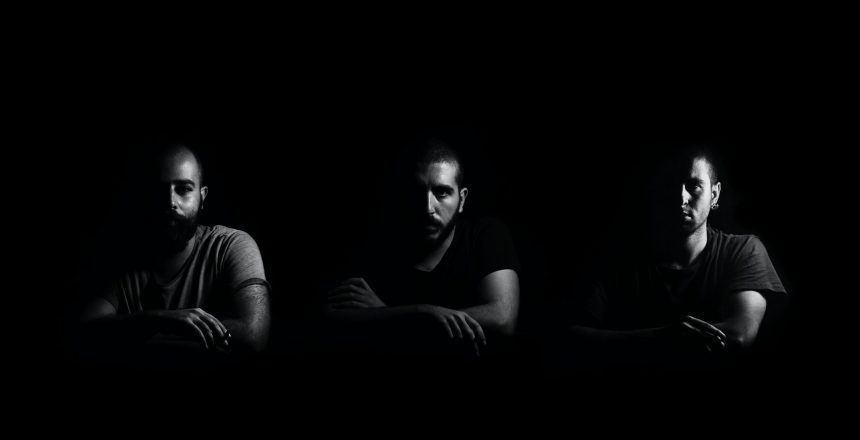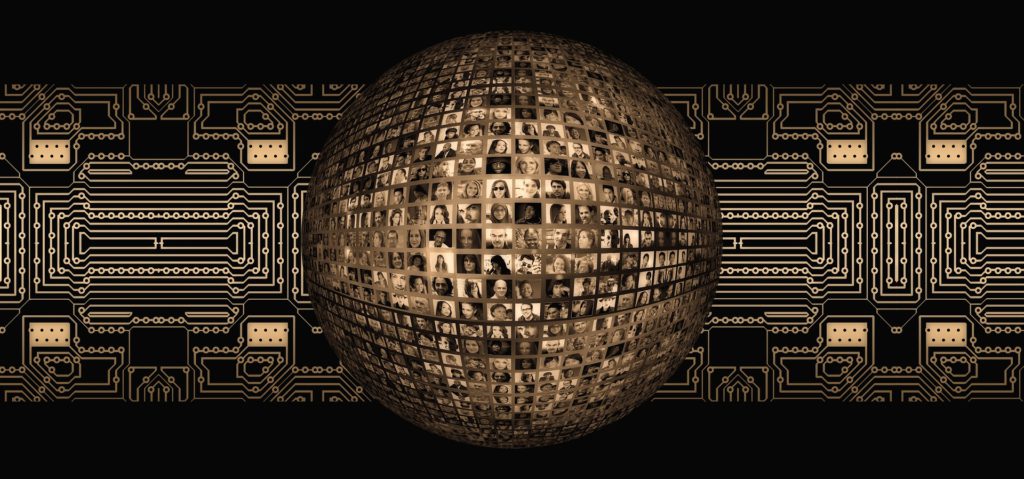Lie detection is a major theme in law enforcement, military, business and psychology. Even for the naïve observer it is not hard to understand why it is important to differentiate between truth and lies in police investigations, intelligence operations, politics, courtroom trials, job interviews and negotiations.
Since the consequences and damage caused by the failure to spot lies can be astronomical, a whole industry has developed that caters to the demand for effective deception detection strategies and tools. A myriad of companies, books, workshops, retired FBI agents and other self-proclaimed body language and lie detection experts on TED Talks promise a simple solution to a complex problem that has existed since the dawn of humankind.
Many of the stereotypical deception cues that are promoted in this way have found their way into police and military interrogation manuals through the sheer power of endless repetition (for a review of the cues mentioned in police manuals, see Vrij and Granhag 2007).
The inconvenient truth, however, is that no universal and reliable nonverbal deception indicators have as yet been identified, that Pinocchio’s nose simply does not exist (DePaulo et al. 2003; Masip et al. 2005; Vrij 2005; Sporer and Schwandt 2006). To tackle the problem of lie detection, we will have to look in a different direction.
The challenges facing deception detection are reflected in the fact that despite several decades of research scientists have not yet reached agreement on a universal definition of deception. What constitutes a lie? What is the difference between lies and deception? Must deception be a covert and intentional act or can one deceive without intending to? These and other theoretical issues are still hotly debated.
One example that is widely referred to in the literature is that of a man being arrested and questioned about the whereabouts of his accomplice. Thinking that the accomplice is safe in a hideout, the man names another address where the accomplice is supposedly hiding, not knowing that the accomplice is actually hiding there. Did the man lie or tell the truth? While such reflections certainly have merit, they have little value for the practitioner in the field.
Some scientists, however, have made discoveries that are of practical value to anyone in the professional lie detection business, though what they have found is not always aligned with our expectations.
It is undeniable that people, including professionals such as police, customs and probation officers, prison guards, judges, negotiators and lawyers, are very poor when it comes to lie detection (Aamodt and Custer 2006; Bond and DePaulo 2006; Vrij 2008). The average accuracy rate is just above 50 per cent (Ekman and O’Sullivan 1991; Vrij and Mann 2001b; Vrij et al. 2011): that’s about the same as flipping a coin.
There are many reasons for this unimpressive performance. One key contributor is the fact that most people rely on nonverbal cues (i.e. body language) when trying to identify deception (Global Deception Research Team 2006; Vrij 2007; Bogaard et al. 2016), while a vast body of evidence suggests that lies and deception cannot be detected by analysing nonverbal behaviour (DePaulo et al. 2003; Sporer and Schwandt 2007; Levine et al. 2009). To make matters worse, what are relied upon most are incorrect, stereotypical cues that empirical evidence clearly tells us are unrelated to deception (Strömwall et al. 2004; Hartwig and Bond 2014; Masip and Herrero 2015).
That professionals are not exempt from this misconception is documented in a string of studies from the UK, Sweden and the Netherlands that have revealed that professionals hold as many incorrect beliefs about nonverbal deception cues as laypeople (Vrij and Bull 1996; Vrij and Semin 1996; Akehurst and Kohnken 2001; Strömwall and Granhag 2003; Strömwall et al. 2004; Vrij et al. 2006; Vrij 2008a).
One such study (Vrij and Semin 1996) compared the beliefs about behavioural cues of deception held by prisoners, police detectives, patrol police officers, prison guards, customs officers from Schiphol airport, and college students. The average work experience of the deception experts was 12 years and the police detectives had just undergone a specialized course at the Dutch College for Criminal Investigation and Crime Control. It turned out that the professional deception experts, who consider detecting lies a daily routine job, held the same stereotypical beliefs about nonverbal deception cues as the inexperienced college students, whilst the prisoners had the best understanding of the relationship between nonverbal behaviour and deception.
The Global Deception Research Team (2006), which comprised 90 scientists, carried out a study in 75 countries, finding that the most prominent belief in the world regarding deception cues is that liars avoid eye contact. The degree to which this belief has penetrated folk psychology and experts alike is astonishing given the vast body of research showing that people avert their gaze as often when speaking the truth as when lying (DePaulo et al. 2003; Bond and DePaul 2006).
In more general terms, all behaviours that are associated with nervousness have overwhelmingly been taken as signs of deception (Strömwall et al. 2004; Vrij et al. 2006; Taylor and Hich 2007; Vrij 2008a). This assumption neglects the fact that innocent people, afraid of not being believed, can be as nervous as anyone that is lying, and that experienced liars may show no signs of nervousness at all.
People often regard self-touches, grooming gestures, various movements of the torso, shifting positions, shoulder shrugs, faster speech, a faster eye blink rate, and many finger, hand, arm, leg and foot movements as deception cues (Zuckerman and Driver 1982; DePaulo et al. 1985; DePaulo 1992). The error in doing so is twofold; firstly, many nonverbal behaviours that are commonly associated with deception actually have no relationship with deception; secondly, people believe that deception is associated with an increase in these movements while the opposite actually occurs, since liars, fully aware of these stereotypical beliefs, decrease such movements because they think that it will make them look less suspicious (Vrij and Semin 1996). This is even true on the level of psychophysiology, the study of interactions between mind and body that operate largely outside conscious control. The eye blink rate, for example, is commonly assumed to increase when someone is lying: what really happens is that the eye blink rate decreases whenever the cognitive load or stakes are high (Vrij 2008a).
The fact that nonverbal communication signals are ill-suited to deception detection does not mean that we should neglect their observation. The experienced observer can draw many conclusions about other people by observing their behaviour patterns. From personality traits (extraversion, introversion, dominance, sociability) and social status to sexual orientation, true, hidden or masked emotions, intentions, motivation and incongruences, people involuntarily leak a constant stream of information (Ambady and Rosenthal 1992; DePaulo and Friedman 1998; Ambady et al. 2000). Women can accurately rate a man’s interest in infants and relationship potential by viewing only his face (Roney et al. 2006), and observing a stranger’s behaviour for just five seconds can result in reasonably reliable inferences of psychopathic personality, callousness, manipulative tendencies and other persistent antisocial behaviours (Fowler et al. 2009).
As a consequence, a proficient deceiver engages in counterstrategies that display behaviour patterns that are associated with honesty and likability, such as the gaze directed to the conversation partner, smiling, head nodding, leaning forwards, direct body orientation, posture mirroring, uncrossed arms, articulate gesturing, moderate speaking rates, lack of ‘ums’ and ‘ahs’, and vocal variety (Buller and Aune 1988).
In order to hone their skills, there are a number of specific challenges for professionals to overcome. First it has to be understood that there is a difference between lie and truth detection. While most laypeople fall victim to the truth bias (Pantazi et al. 2018)—a universal tendency to believe that others speak the truth despite sometimes glaring evidence to the contrary—professionals often find themselves on the other end of the spectrum and fall victim to the lie bias (Bond and DePaulo 2008), a tendency to believe that everyone is lying.
If you think that professionals are not biased, consider this: a study in the UK showed that in 73 per cent of cases the police interviewers were “certain” that the suspects were guilty before having interviewed them (Moston et al. 1992), and in the US American police officers were equally confident prior to interviews “because we do not interview innocent people” (Kassin 2005). This means interviewers are more inclined towards extracting confessions than finding the truth.
It can therefore come as no surprise that 28 lie detection studies (Vrij et al. 2011) with police officers, police detectives and parole officers found that on average these professionals correctly classified only 56 per cent of liars and 44 per cent of truthtellers, where 50 per cent could be expected by taking a random guess. A convergence of lie bias, confirmation bias, a tendency to accept only information that confirms pre-existing beliefs (Darley and Gross 1983) and especially an unfounded overconfidence in their own ability contributes to such poor performance.
Overconfidence in lie detection skills deserves special attention because it is so widespread. Research has consistently shown that when professional lie catchers and laypersons are compared, professionals are much more confident in their ability to catch liars but not more accurate (DePaulo and Pfeifer 1986; Meissner and Kassin 2002; Garrido et al. 2004; Kassin et al. 2005). The more experienced the professionals, the more confident they are in their assessments of veracity, but they do not become more accurate (Porter et al. 2000; Kozinski 2017).
To put all of this into perspective, we have to consider the situation police officers find themselves in. Imagine a golfer trying to hit the ball into a faraway hole without actually seeing it because the view is obstructed by some trees. Every time he hits the ball, some spectators are jubilant and others are deflated, so he never knows with certainty if he even comes close to the flag no matter how often he hits the ball. The police are in a similar situation: they very seldom know with certainty if their veracity assessment is correct since direct feedback is often lacking, and with it the opportunity to learn and improve.
But the true reason for the poor performance of law enforcement when it comes to deception detection, the root cause of this problem, is encapsulated in a fundamental flaw that has compromised this community for decades. What is little known to outsiders is the fact that law enforcement agencies worldwide largely entrust third parties either with the responsibility to train their officers and recruits or to provide the training content. One such provider is Wicklander-Zulawski & Associates. Wicklander-Zulawski is one of the largest private agencies engaged in police training and trains more interrogators than any other company in the world.
According to its press release, “the firm’s training experience includes services for a majority of U.S. police departments and federal agencies such as the U.S. Army, FBI, DHS, ICE, CIS, FLETC, EEOC, TSA, FAMs, and the U.S. State Department’s Bureau of Diplomatic Security Services. Wicklander-Zulawski conducts over 450 onsite seminars each year in over fifty countries worldwide and has trained over 500,000 law enforcement and private sector professionals.”
The fundamental flaw that we want to point out is rooted in the fact that providers like Wicklander-Zulawski base their training on interrogation techniques such as REID (Inbau et al. 2013) that are not only confrontational, accusatory and coercive, and consequently produce an abundance of false confessions (Moore and Fitzsimmons 2011), but promote most of the invalid deception cues that we have discussed (Kassin 2008; Kozinski 2017).
The main challenge today is that interrogation methodologies such as REID have permeated the entire policing system in most countries that have adopted them (Duane 2017); they have crossed over into various popular books and publications, and have even found their way into some scientific papers (for a comprehensive review of REID, see Kozinski 2017). Although Wicklander-Zulawski recognized the writing on the wall and abandoned REID in 2017, many other providers still insist on its validity. What is really tragic is that it took several decades to begin even to question the validity of these methodologies, and that they are still being applied on a global scale today. But can we really blame law enforcement when it applies in good faith what it was taught by so-called experts?
So where do we go from here?
The good news is that we do not have to re-invent the wheel, that we have promising alternatives which have been validated by empirical research.
The first step is to adopt information-gathering interview styles (Meissner et al. 2014). Over the last couple of years, some European countries have begun to transition from the accusatorial approach that focuses on confessions at all costs to an approach that aims at learning the actual truth (Gudjonsson 2003; Griffiths and Milne 2006; Walsh et al. 2016). The information-gathering approach is based on scientific principles, establishes a rapport between the interviewer and suspect, and is geared towards elicitation of information (Walsh et al. 2016). Following the UK, where this approach was adopted following a number of high-profile wrongful conviction cases, the Netherlands developed its own Professional Training in Interviewing (PTI) curriculum (van Beek and Hoekendijk 2016) with the aim to build rapport with suspects to elicit comprehensive accounts which can then be analysed.
The second step involves the repositioning of nonverbal deception cues. While, as we have seen, nonverbal cues cannot identify deception, they are nevertheless valuable in the determining emotions, intentions, and incongruences between what is said and what is felt. This is especially true for facial micro-expressions. In short, in the context of deception detection, we have to give nonverbal behaviour its proper place.
The third and last step concerns the adoption of linguistic deception markers as the primary source of deception cues, since a large body of empirical research has unambiguously concluded that verbal cues are better diagnostic cues of deceit than nonverbal ones (Porter and Yuille 1995; Vrij 2008).
When popular and professional deception literature discusses verbal and nonverbal communication, the focus is often on the nonverbal aspect. The assumption is that nonverbal communication produces reliable deception cues because people cannot control their behaviour. That is a flawed argument in itself, because people can and do control their behaviour, at least to a certain extent. The greater misconception is thinking that people can control their verbal communication, their language.
People cannot control their language, not only because part of it is subconscious, but because of the incredible processing speed of the brain. To speak—that is, to translate a picture in your mind into a sentence—involves adherence to the correct rules of grammar; it involves syntax—that is, how you structure your sentence; it involves instant and precise word for word choice from a vocabulary of probably more than 100,000 words; and it involves the use of a myriad little function words that glue it all together. These function words are processed in a different part of the brain and largely evade conscious awareness, which is why they are interesting in the context of deception detection.
The processing speed required by the brain to do all that simultaneously is too fast for anyone to fully control their language. People may believe that they can control their language, but in reality they cannot. The only way to control language is simply not to talk—but then, sometimes silence speaks louder than words.
There are two approaches to analysing language, and both rely on information-gathering interviews, as only they create enough of the free narrative—that is, uninterrupted speech—which is required for the analysis.
The first approach is automated text analysis. The second is geared towards the practitioner in the field and focuses on spoken words.
Ott et al. (2012) analysed positive hotel reviews of several popular online review sites and distinguished truthful from deceptive reviews with nearly 90 per cent accuracy.
Netzer et al. (2019) used text mining and machine learning tools to analyse 120,000 loan applications and found that it was possible to predict loans that will fault in the future based on the words used in the loan application.
Picornell (2012) focused on identifying a deceptive linguistic strategy rather than individual cues and correctly predicted 85 per cent of deceptive statements.
Although this field is promising and is rapidly growing, in these examples trained data scientists used machine learning tools for their research, which is hardly accessible to law enforcement.
At the other end of the spectrum are manual methodologies with the somewhat counterintuitive premise to believe exactly what is said, even if it is known that the subject is lying (Driscoll 1994; Rabon 1994; McClish 2001; Varnell 2013). These methods analyse the words people use to determine if what is said is truthful and accurate. The advantage is that these methods can be applied by any trained practitioner, although sound scientific validation has yet to take place (Bogaard et al. 2016). An alternative manual tool is criteria-based content analysis (CBCA), the most widely studied form of statement analysis with a presumed accuracy rate of up to 80 per cent (Vrij 2005).
The best approach to deception detection to achieve a consistent and verifiable degree of accuracy is probably a multi-channel approach whereby signals from various communication channels are taken into consideration. Close observation of the face, body, voice, verbal style, verbal content and psychophysiology can result in meaningful veracity assessments if the pitfalls of coercive interviews, stereotypical deception cues, overconfidence in one’s own ability, bias and flawed training manuals can be overcome.
A comprehensive solution would entail not only a fundamental rethinking of the current approach in general, and certain aspects of it in particular, but would first and foremost require the abandonment of stereotypical deception cues and outdated interrogation styles. We recognize that some of the misconceptions discussed here have so deeply been entrenched in law enforcement thinking and psychology over the years that it can seem daunting to introduce the changes we have proposed. However, techniques building on scientifically validated methodologies that incorporate the multi-channel approach already exist.
In conclusion, while we have seen anecdotal evidence in the scientific literature that a small number of lie detection wizards may exist (O’Sullivan and Ekman 2004), for most others, acquiring the skill of reading other people requires practice, direct feedback and motivation. It was our aim to highlight current misconceptions so that those who need it most (law enforcement) can reflect on their own best practices and beliefs for their own benefit and the benefit of the people they have sworn to serve.
References:
Aamodt, M. G. and Custer, H. (2006). Who can best catch a liar? A meta-analysis of individual differences in detecting deception. Forensic Examiner, 15(2), pp. 6-11.
Akehurst, L., Köhnken, G., Vrij, A., & Bull, R. (1996). Lay persons’ and police officers’ beliefs regarding deceptive behaviour. Applied Cognitive Psychology, 10, 461-471.
Ambady, N., & Rosenthal, R. (1992). Thin slices of expressive behaviour as predictors of interpersonal consequences: A meta-analysis. Psychological Bulletin,111, 256-274
Ambady, N., Bernieri, F. J., & Richeson, J. A. (2000). Toward a histology of social behaviour: Judgmental accuracy from thin slices of the behavioural stream. Advances in Experimental Social Psychology,32, 201-271.
Bogaard, G., Meijer, E.H., Vrij, A. and Merckelbach, H., 2016. Strong, but wrong: Lay people’s and police officers’ beliefs about verbal and nonverbal cues to deception. PloS one, 11(6), p.e0156615.
Bogaard, G., Meijer, E.H., Vrij, A. and Merckelbach, H., 2016. Scientific Content Analysis (SCAN) cannot distinguish between truthful and fabricated accounts of a negative Event. Frontiers in psychology, 7, p.243.
Bond, C. F., & DePaulo, B. M. (2006). Accuracy of deception judgments. Personality and Individual Differences, 10(3), 214-234.
Bond, C.F., & DePaulo, B.M. (2008). Individual differences in judging deception: Accuracy and bias. Psychological Bulletin,134,477–492.
Buller, D.B., & Aune, R.K. (1988). The effects of vocalics and non-verbal sensitivity on compliance: A speech accommodation theory explanation. Human Communication Research,14, 301–332.
Darley, J.M., & Gross, P.H. (1983). A hypothesis-confirming bias in: labelling effects. Journal of Personality and Social Psychology,44, 20–33.
DePaulo, B.M., Stone, J.I., & Lassiter, G.D. (1985). Telling ingratiating lies: Effects of target sex and target attractiveness on verbal and nonverbal deceptive success. Journal of Personality and SocialPsychology,48, 1191–1203.
DePaulo, B.M., & Pfeifer, R.L. (1986). On-the-job experience and skill at detecting deception. Journal of Applied Social Psychology,16, 249–267
DePaulo, B.M. (1992). Nonverbal behavior and self-presentation. Psychological Bulletin,111, 203–243.
DePaulo, B. M., & Friedman, H. S. (1998). Nonverbal communication. In D. T. Gilbert, S. T. Fiske, & G. Lindzey (Eds.),The handbook of social psychology(pp. 3-40). Boston: McGraw-Hill
DePaulo, B.M., Lindsay, J.L., Malone, B.E., Muhlenbruck, L.,Charlton, K., & Cooper, H. (2003). Cues to deception. Psychological Bulletin,129, 74–118.
Driscoll, L. (1994). A validity assessment of written statements from suspects in criminal investigations using the SCAN technique. Police Studies, 4, 77-88.
Ekman, P., & O’Sullivan, M. (1991). Who can catch a liar? American Psychologist, 46,913–920.
Fowler, K.A., Lilienfeld, S.O., & Patrick, C.J. (2009). Detecting psychopathy from thin slices of behavior. Psychological Assessment,21, 68–78
Garrido, E., Masip, J., & Herrero, C. (2004). Police officers’ credibility judgements: Accuracy and estimated ability. International Journal of Psychology, 39, 254–275.
Global Deception Research Team, 2006. A world of lies. Journal of cross-cultural psychology, 37(1), pp.60-74.
Griffiths, A., & Milne, R. (2006). Will it all end in tiers? Police interviews with suspects in Britain. In T. M.Williamson (Ed.),Investigative interviewing: Rights, research and regulation(pp. 167–189).Cullompton: Willan Publishing
Gudjonsson, G. H. (2003). Interrogation tactics & techniques. In: The psychology of interrogations and confessions: A handbook(1st ed., pp. 7–37). West Sussex, England: John Wiley & Sons, Ltd.
Hancock, J.T., Woodworth, M.T. and Porter, S., 2013. Hungry like the wolf: A word‐pattern analysis of the language of psychopaths. Legal and criminological psychology, 18(1), pp.102-114.
Hartwig, M. and Bond Jr, C.F., (2014). Lie detection from multiple cues: A meta‐analysis. Applied Cognitive Psychology, 28(5) pp. 661-676.
Inbau, F.E., Reid, J.E., Buckley, J.P. and Jayne, B.C., 2013. Essentials of the Reid technique: Criminal interrogation and confessions. Jones & Bartlett Publishers.
Kassin, S. M. (2005). On the psychology of confessions: Does innocence put innocents at risk? American Psychologist,60, 215-228.
Kassin, S.M., 2008. Confession evidence: Common sense myths and misconceptions. Criminal Justice and Behavior, 35(10), pp.1309-1322.
Kassin, S.M., Meissner, C.A., & Norwick, R.J. (2005). ‘‘I’d know a false confession if I saw one’’: A comparative study of college students and police investigators. Law and Human Behavior,29,211–227.
Kozinski, W., 2017. The Reid interrogation technique and false confessions: A time for change. Seattle J. Soc. Just., 16, p.301.
Levine, T.R., McCornack, S.A. and Park, H.S., (2009). Deception research at Michigan State University.
Masip, J., Sporer, S., Garrido, E., & Herrero, C. (2005). The detectionof deception with the reality monitoring approach: A review of the empirical evidence. Psychology, Crime, & Law,11, 99–122.
Masip, J. and Herrero, C., (2015). Police detection of deception: Beliefs about behavioral cues to deception are strong even though contextual evidence is more useful. Journal of Communication, 65(1) pp.125-145.
McClish, M. (2001). I know you are lying. Winterville: Marpa Group Inc.
Meissner, C.A., & Kassin, S.M. (2002). ‘‘He’s guilty!’’: Investigator bias in judgments of truth and deception. Law and Human Beha-vior,26, 469–480.
Meissner, C.A., Redlich, A.D., Michael, S.W., Evans, J.R., Camilletti, C.R., Bhatt, S. and Brandon, S., 2014. Accusatorial and information-gathering interrogation methods and their effects on true and false confessions: A meta-analytic review. Journal of Experimental Criminology, 10(4), pp.459-486.
Moore, T.E. and Fitzsimmons, C.L., 2011. Justice imperiled: False confessions and the Reid technique. Crim. LQ, 57, p.509.
Moston, S. J., Stephenson, G. M., & Williamson, T. M. (1992). The effects of case characteristics on suspect behaviour during police questioning. British Journal of Criminology,32, 23-39
Mullins, C.J., 2017. You Have the Right to Remain Innocent: What Police Officers Tell Their Children about the Fifth Amendment.
Netzer, O., Lemaire, A. and Herzenstein, M., 2019. When words sweat: Identifying signals for loan default in the text of loan applications. Journal of Marketing Research, 56(6), pp.960-980.
Ott, M., Cardie, C. and Hancock, J., 2012, April. Estimating the prevalence of deception in online review communities. In Proceedings of the 21st international conference on World Wide Web (pp. 201-210).
O’Sullivan, M. and Ekman, P., 2004. 12 The wizards of deception detection. The detection of deception in forensic contexts, p.269.
Pantazi, M., Kissine, M. and Klein, O., 2018. The power of the truth bias: False information affects memory and judgment even in the absence of distraction. Social cognition, 36(2), pp.167-198.
Picornell, I., 2013. The Flexible liar. A strategy for deception detection in written witness statements. United Kingdom: Guernsey.
Porter, S., & Yuille, J. C. (1995). Credibility assessment of criminal suspects through statement analysis. Psychology, Crime, and Law,1, 319–331.
Porter, S. and ten Brinke, L., 2010. The truth about lies: What works in detecting high‐stakes deception?. Legal and criminological Psychology, 15(1), pp.57-75.
Porter, S., Woodworth, M., & Birt, A.R. (2000). Truth, lies, and video-tape: An investigation of the ability of federal parole officers to detect deception. Law and Human Behavior,24, 643–658.
Rabon, D., 1994. Investigative discourse analysis. Durham, NC: Carolina Academic Press.
Roney, J.R., Hanson, K.N., Durante, K.M., & Maestripieri, D. (2006).Reading men’s faces: women’s mate attractiveness judgments track men’s testosterone and interest in infants. Proceedings of the Royal Society of London B,273, 2169–2175.
Sporer, S.L., & Schwandt, B. (2006). Paraverbal indicators of deception: A meta-analytic synthesis. Applied Cognitive Psychology,20,421–446.
Sporer, S.L. and Schwandt, B., (2007). Moderators of nonverbal indicators of deception: A meta-analytic synthesis. Psychology, Public Policy, and Law, 13(1), p. 1.
Strömwall, L. A., & Granhag, P. A. (2003). How to detect deception? Arresting the beliefs of police officers, prosecutors and judges. Psychology, Crime and Law, 9, 19-36.
Strömwall, L., Granhag, P.A. and Hartwig, M., (2004). 10 Practitioners’ beliefs about deception. The detection of deception in forensic contexts, p.229.
Strömwall, L. A., Granhag, P. A., & Hartwig, M. (2004). Practicioners’ beliefs about deception. In L. A. Strömwall & P. A. Granhag (Eds.), The detection of deception in forensic contexts. Cambridge: Cambridge University Press.
Taylor, R., & Hick, R.F. (2007). Believed cues to deception: Judgments in self-generated serious and trivial situations. Legal and Criminological Psychology,12, 321–332.
van Beek, M., & Hoekendijk, J. (2016). The investigative interviewing of suspects in the Netherlands: Current practices and historical developments. In D. W. Walsh, G. E. Oxburgh, A. D. Redlich, & T. Myklebust (Eds.),International developments and practices in investigative interviewing and interrogation: Volume 2, suspects(pp. 157–170). Abingdon: Routledge.
Varnell, S. (2013). Statement Analysis. Florida: SCV Publishing
Vrij, A., & Semin, G. (1996). Lie experts’ beliefs about nonverbal indicators of deception. Journal of Nonverbal Behavior, 20, 65-80.
Vrij, A., & Mann, S. (2001b). Who killed my relative? Police officers’ ability to detect real-life high-stake lies. Psychology, Crime & Law, 7,119–132. doi:10.1080/10683160108401791.
Vrij, A., 2005. Criteria-Based Content Analysis: A Qualitative Review of the First 37 Studies. Psychology, Public Policy, and Law, 11(1), p.3.
Vrij, A., Akehurst, L., & Knight, S. (2006). Police officers’, social workers’, teachers’ and the general public’s beliefs about deception in children, adolescents and adults. Legal and Criminological Psychology, 11, 297-312.
Vrij, A. and Granhag, P.A., 2007. Interviewing to detect deception.
Vrij, A., 2008. Nonverbal dominance versus verbal accuracy in lie detection: A plea to change police practice. Criminal Justice and Behavior, 35(10), pp.1323-1336.
Vrij, A. (2008a).Detecting lies and deceit: Pitfalls and opportunities.(2nd ed.). Chichester, England: Wiley
Vrij, A. (2008a). Beliefs about nonverbal and verbal cues to deception. In A. Vrij (Ed.), Detecting lies and deceit(pp. 115-140). Chirchester: Wiley.
Vrij, A., Granhag, P. A., & Porter, S. (2011). Pitfalls and opportunities in nonverbal and verbal lie detection. Psychological Science in the Public Interest, 11,89–121.
Walsh, D. W., Oxburgh, G. E., Redlich, A. D., & Myklebust, T. (Eds.). (2016).International developments and practices in investigative interviewing and interrogation: Volume 2, suspects. Abingdon: Routledge.
Zuckerman, M., Driver, R., & Koestner, R. (1982). Discrepancy as a cue to actual and perceived deception. Journal of Nonverbal Beha-vior,7, 95–100.







